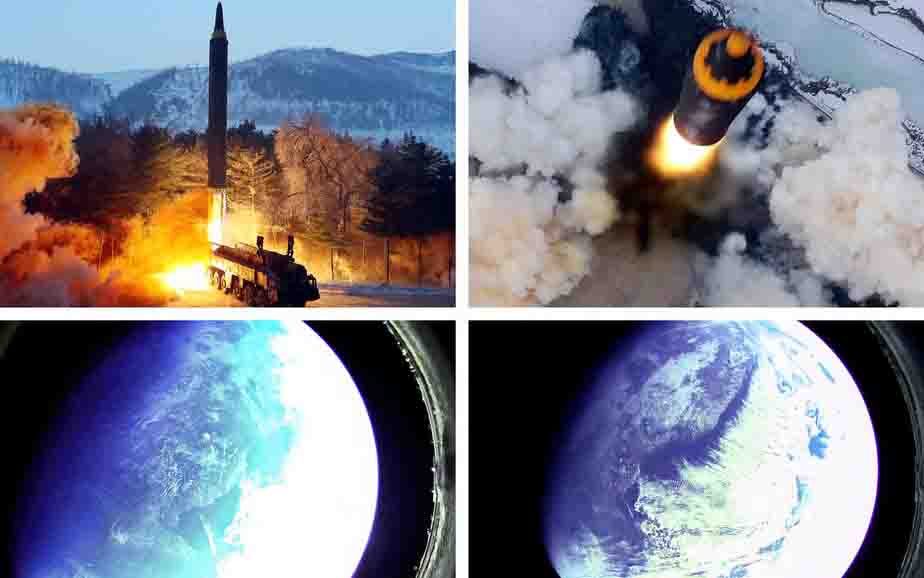
A combination image shows what appears to be a Hwasong-12 "intermediate and long-range ballistic missile" test, that state media KCNA says was carried out on Sunday, along with pictures reportedly taken from outer space with a camera at the warhead of the missle, in this image released on January 31, 2022. [KCNA via REUTERS]
North Korea confirmed on Monday it had launched a Hwasong-12 ballistic missile, the same weapon it had once threatened to target the U.S. territory of Guam with, sparking fears the nuclear-armed state could resume long-range testing.